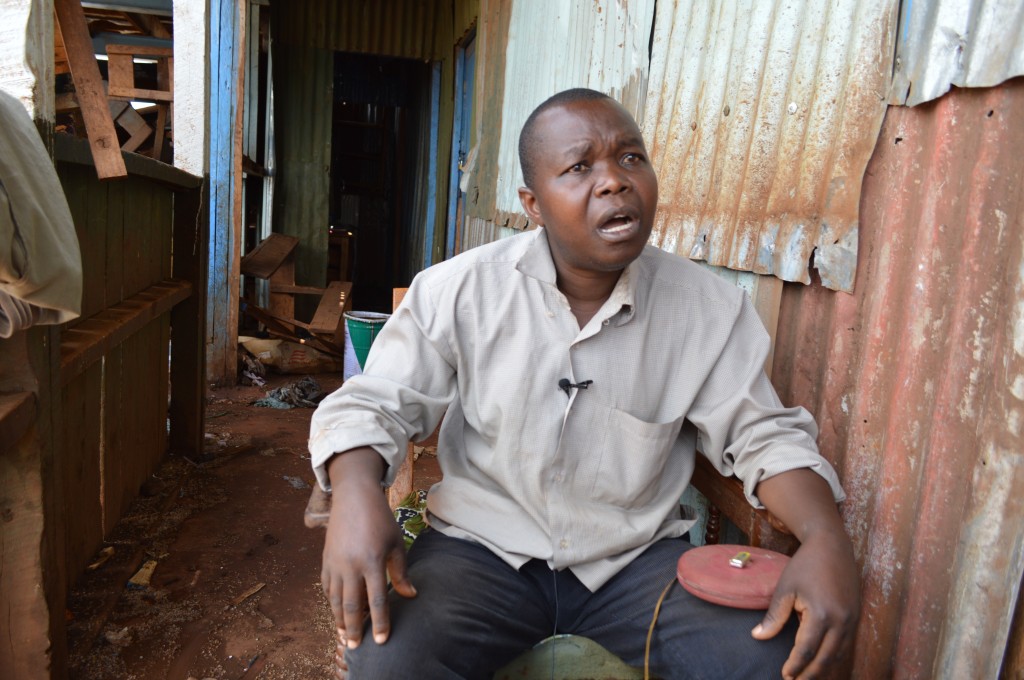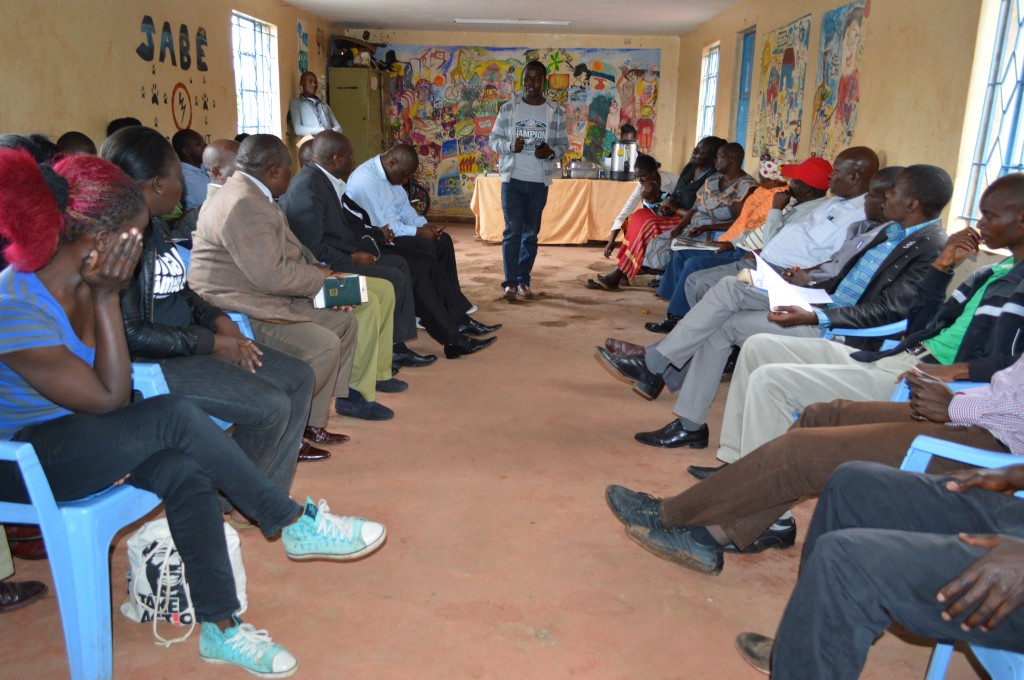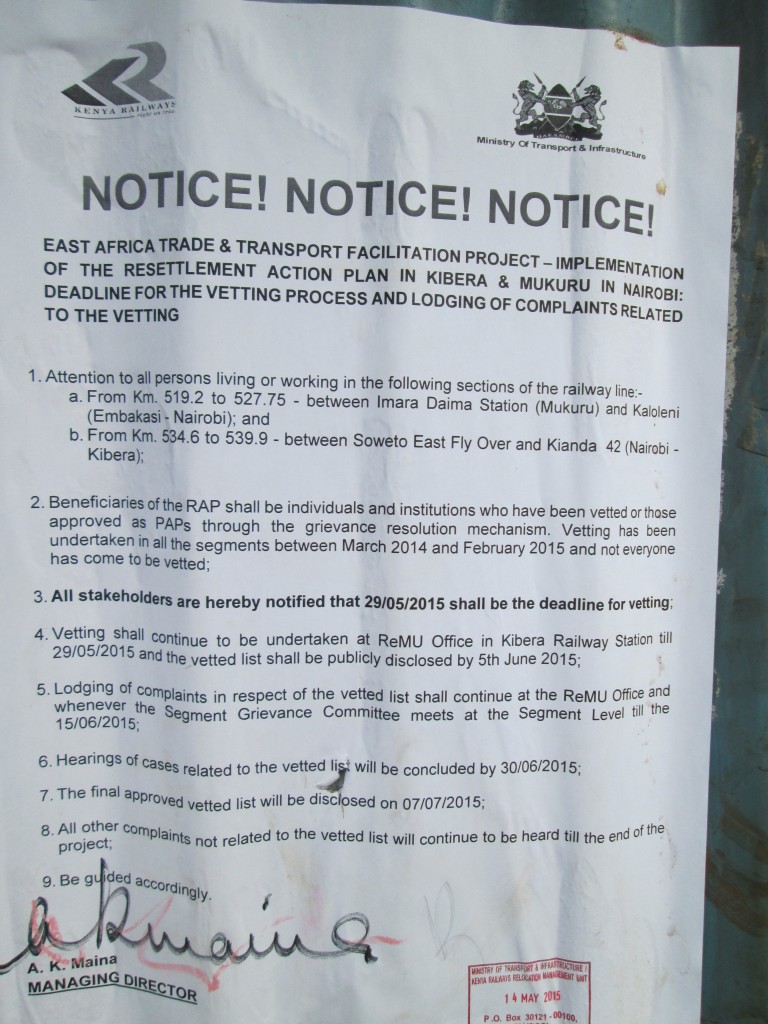When around 15 police trucks came to Kibera a few weeks ago to witness and protect the demolition of schools along the railway line, there was shock and tension as Spurgeons school was targeted. But before the bulldozer could reach the permanent building, the community members turned up in large numbers to stop the demolition, saying that the school belonged to them. They claimed that the school has been helping their needy children and they could not sit back and watch it go down.
By this time, St. Juliet Educational Center, Kibera Academy Primary (also known as Huruma) and Kibera Academy Secondary were already down. The Head Teacher of St. Juliet, Mr. Jared Musula, was so furious with the act and wondered why some schools were left along the way before reaching his school.
Jared Musula, Head Teacher at St. Juliet
"Bars are operating you can hear loud music, but schools that are helping the children are being demolished, what's the government doing?"
Several other schools and structures including churches are expected to be demolished, but attention to St. Juliet and Spurgeon forced a halt on the process for a while.
Kenya Railways decided several years ago to expand the railway buffer and reclaim the land, citing safety and interference with train passage. In 2010 they made their most recent enumeration of the residents and businesses along the track targeted for demolition, but residents say that these are already outdated. While residents have been promised new housing, they do not appear to have made concessions for the schools operating in the buffer area, other than saying that the schools be shut down and students enrolled at nearby government schools.
Recently, a petition by a section of the Project Affected Persons (PAPs) had been filed in court and a ruling was made, stating:
1. The petitioner's petition fails and is dismissed
2. The Respondent's cross-petition succeeds and it is hereby ordered that the recent illegal occupiers of the Railway Reserve whose names do not appear in the list of the Project Affected Persons do move out of the Railway Reserve and allow the Corporation to proceed with the Resettlement plan.
Their evictions however will have to take into account the following factors:- That at the time of eviction, neutral observers should be allowed to access to the suit properties to ensure compliance with international human rights principles.
- That there must be a mandatory presence of Government officials and security officers.
- That there must be compliance with the right to human dignity, life and security of the evictees.
- That the evictions must not take place at night, in bad weather, during festivals or holidays, prior to any elections, during or just prior to school exams and in fact preferably at the end of the school term or holidays.
- That no one is subjected to indiscriminate attacks.
Community Meeting with Langata Youth Network
Recently, Langata Youths Network organized a forum to bring together all the affected schools and churches along the Railway to look at the way forward. They resolved that the people concerned with the demolitions be engaged further to make them understand why dialogue was still important in every stage and step they make. They also said that they will try to respect the court ruling by all means, but they wanted to understand who made the decision that some schools to remain while others to be demolished. The group then formed a committee to help follow up with all the relevant offices.
There has been a lot of silence since the demolition of the few schools happened, until recently when we saw a notice posted asking the PAPs to go for a vetting process. This sounded to me like a review that they had all along been crying for only called by a different name or word. It says that the vetting and complaint lodges will continue and a final list of the PAPs would be published publicly.
Meanwhile the schools already demolished are proceeding with learning as best they can. St Juliet returned some of its class roofs, while Spurgeon is squeezing inside their permanent building that the community members had narrowly rescued in the presence of heavily armed police.
According to the Relocation Action Plan (RAP) Document the Schools along the railway should close down and send their students to the few public schools in Kibra, but the Schools wondered how they would do it since the RAP did not give a proper guideline on who is responsible for taking the students to those particular public schools, and were not sure whether they would be admitted.
This post, by Map Kibera Trust coordinator Joshua Ogure, originally appeared on Map Kibera's blog May 21, 2015.



